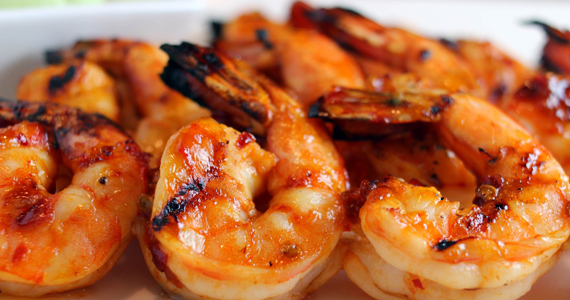
Prawns
There is much praise to be sung about Australian prawns, regardless of season or occasion. Most of us have fond memories of Christmas spent with family and friends, enjoying each other’s company with amazing, fresh Australian prawns. Prawns are high protein, low fat, and have zero carbs, and is a great sauce of omega 3 fatty acids. They are rich in important elements needed for a balance system, and help reduce the risk of some cancers, as well as heart disease. Although they might be a bit expensive, with a bit of knowledge on proper storage and preparation, everybody can enjoy prawns to their full potential and minimise food wastage.
Store |
It is always best to buy seafood as close to use as possible. Put seafood into the fridge or freezer as soon as you get home, don’t leave it in the car or on the bench. Store prawns in an airtight container, or covered tightly with plastic wrap, away from other food in the coldest part of fridge and leave in the shell for as long as possible
- Leave prawns in their shells until just before use
- Store them in an airtight container in the refrigerator
- Fresh prawns, cooked or raw, should keep refrigerated for up to 3 days and frozen for up to 3 months below -18ºC.
- Once thawed, frozen prawns should not be refrozen.
For more seafood safety tips, check out NSW Food Authority’s page here.
Cook |
Like all seafood, prawns require very little cooking. It is always better to undercook, rather than overcook them, as they will continue to cook in the residual heat once they are removed from the pan.
Cooked prawns are good in things like:
- salads and sandwiches
- eaten cold with a dipping sauce
- prawn cocktails and bloody mary mayos
Take care not to use them in a cooked dish, however, as reheating them will make them tough.
Other recipe ideas include stir-fried prawns, prawn platters, roasted with some lemon or seared with lots of spices. Check out Lifestyle Food’s Christmas Prawn Recipes for more!
Prawns marry well with a wide range of flavours and are suitable for most cooking styles. Tomalley, the coral or mustard from prawn heads, gives a concentrated prawn flavour when cooked; it adds richness to Thai curries and is responsible for the distinctive flavour of prawn bisques and shellfish reduction sauces.
Buy |
Prawns are highly perishable in their raw state and so are often frozen or boiled at sea as soon as they are caught. If cooking with prawns, buy green (raw) prawns, as cooked prawns will toughen if reheated. Whether buying cooked or raw prawns look for firmly attached heads and tight, firm shells with a good sheen. There shouldn’t be any blackening around the head or legs as this is a sign of oxidation, and they should have a pleasant ‘fresh sea’ smell. Buy 1kg of prawns in the shell to get about 500g of prawn meat.
(Information courtesy of Sydney Fish Markets’ FISHline.)
Fun Fact |
Thought ‘shrimp’ and ‘prawn’ were different names of the same thing? So did we!
But actually, according to the Museum of Victoria, they aren’t the same thing at all! A big difference between shrimps and prawns is in the way the segments of the abdomen (tail) overlap. In prawns, the sides of all segments overlap the segment behind, like roof tiles – and have the characteristic round, curved shape to their bodies, while shrimp have smaller bodies that curve much less.


